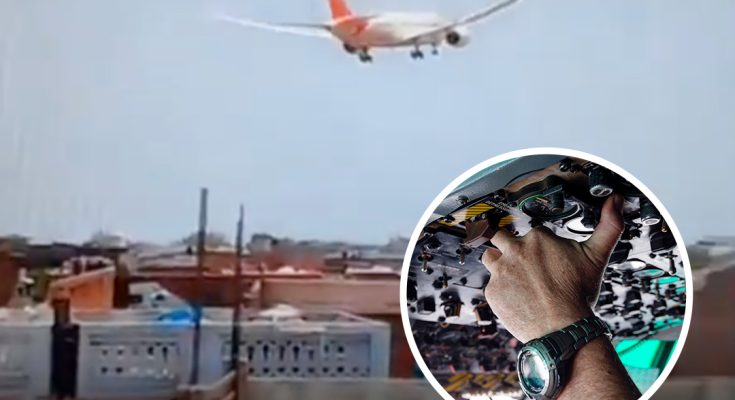Aside from initial reports about Air India Flight AI-171’s crash, including the devastating aftermath, details concerning what the pilot did before the tragedy occurred have been unveiled.
A devastating tragedy unfolded in Ahmedabad on Thursday afternoon, June 12, 2025, when Air India Flight AI-171 crashed shortly after takeoff, leaving the nation in shock and sorrow. The Boeing 787 Dreamliner, carrying 242 passengers and crew members, was en route to London Gatwick when it suddenly encountered trouble.
Commanding the aircraft was Captain Sumeet Sabharwal, who issued an urgent Mayday call — the most severe emergency signal in aviation — moments before all contact with Air Traffic Control (ATC) was lost.
The distress call, which is internationally recognized and must be repeated three times for clarity and priority handling —”Mayday, Mayday, Mayday” — marked the pilot’s final communication before the plane vanished from radar. Despite repeated efforts from ATC to reconnect, there was no further response from the cockpit, as confirmed by the Directorate General of Civil Aviation (DGCA).
At approximately 1:39 p.m. IST, the aircraft crashed into the Meghani Nagar neighborhood, a residential area with a population of five million just outside the airport’s perimeter. The incident occurred just five minutes after takeoff.
The plane crash site erupted in flames and was soon engulfed in thick, black smoke that towered over the city skyline. Emergency response teams rushed to the scene immediately, launching a rescue operation amid the wreckage.
The term “Mayday” itself has a poignant origin. Coined in the early 1920s by Frederick Stanley Mockford, a radio officer at London’s Croydon Airport, it is derived from the French phrase “m’aider,” which means “help me.”
Alongside the Morse code “SOS” signal, the International Radiotelegraph Convention adopted the term as the standard voice distress call for both aircraft and vessels around the world by 1927.
Aviation professionals rely on Mayday calls to signal the most critical emergencies in flight, including engine failures, structural malfunctions, fires, severe weather conditions, or serious medical incidents onboard. Mayday is different from less severe distress calls like “Pan-pan,” which address technical problems that don’t immediately endanger lives.
When a pilot issues a Mayday call, they typically include essential details such as the aircraft’s identification, location, the nature of the emergency, the number of people on board, how much fuel remains, and what assistance is needed.
This structured format helps air traffic controllers and emergency responders act quickly and efficiently to provide help. All non-urgent radio communications are halted once a Mayday is received, ensuring the distressed aircraft has absolute communication priority.
ATC then coordinates with emergency services, other aircraft, and nearby airports to provide full support. The Federal Aviation Administration (FAA) also advises pilots to provide specific details such as weather conditions, altitude, and flight intentions to enhance the effectiveness of rescue efforts.
Importantly, falsely declaring a Mayday is a criminal act in many countries, punishable by fines and jail time. In the case of the recent Ahmedabad crash, the crew’s swift and accurate Mayday call was a vital step in following emergency protocols.
Though the outcome was tragic, with no known survivors, the transmission offered valuable information for investigators and emergency services, highlighting the professionalism of the flight crew even in the most perilous moments.
Firefighters worked tirelessly to extinguish the flames engulfing the wreckage of Air India Flight AI-171, which had been fully fueled shortly before its takeoff and catastrophic crash. Water was also sprayed on surrounding multistory buildings, one of which bore the plane’s tail cone still lodged near its rooftop, stabilizer fins visibly damaged.
The immediate aftermath was marked by horrific scenes — charred bodies scattered across the ground, one solemnly carried away by emergency teams.
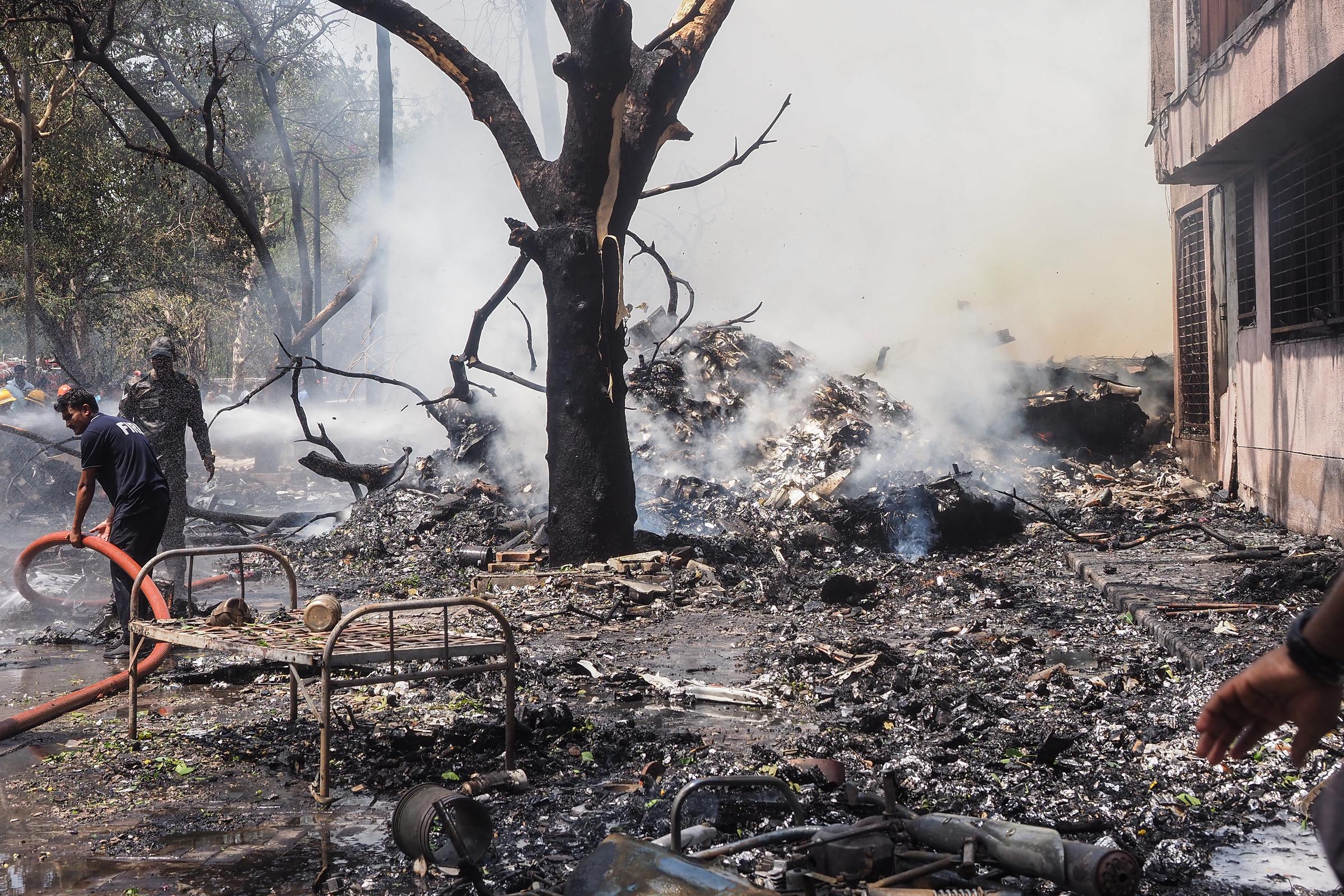
The devastating aftermath of the Air India plane crash in Ahmedabad on June 12, 2025. | Source: Getty Images
According to Air India, the aircraft’s 242 passengers and crew included 169 Indian nationals, 53 Britons, seven Portuguese citizens, and one Canadian.
In the final minutes before the devastating crash, data gathered from Flightradar24 reveals a brief but alarming timeline. At 1:30 p.m. local time, the aircraft was recorded as stationary on the ground, with its speed logged at zero knots.
Four minutes later, at 1:34 p.m., it remained on the ground, though its speed had begun to increase, reaching 10 knots — roughly 11.5 miles per hour or 18.5 kilometers per hour.
Then, at 1:38 p.m., the plane made a sudden ascent, climbing swiftly to an altitude of 625 feet (approximately 190 meters) and reaching a speed of 174 knots. Immediately after this short-lived climb, all signals from the aircraft were lost.
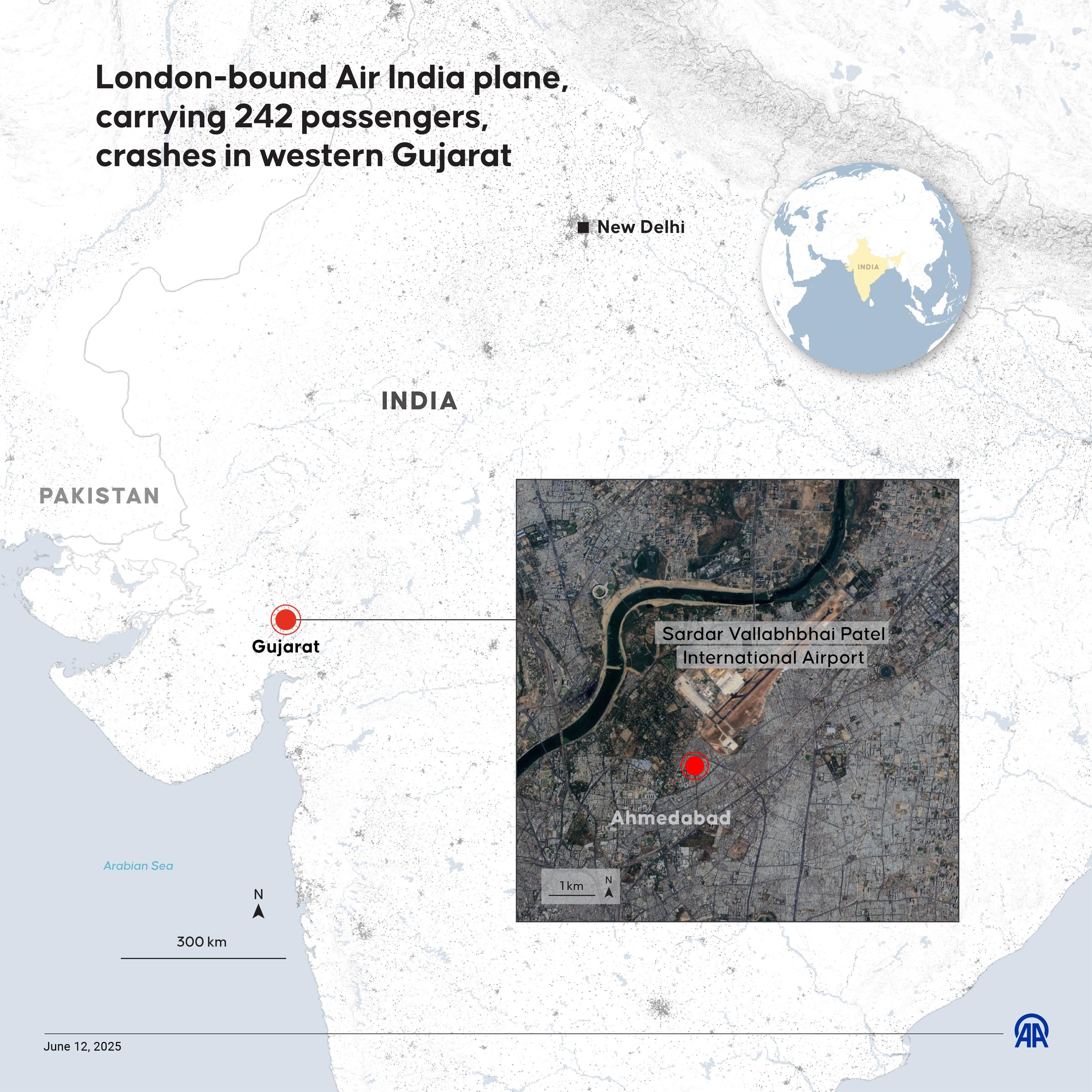
An infographic showing the plane’s course and information on the crash; photo created in Ankara, Turkiye on June 12, 2025. | Source: Getty Images
Addressing the tragedy, British Prime Minister Keir Starmer expressed his heartbreak in a public statement, calling the scenes from the crash “devastating.”

British Prime Minister Keir Starmer during his meeting with NATO Secretary General Mark Rutte in London, England on June 9, 2025. | Source: Getty Images
Similarly, Indian Prime Minister Narendra Modi described the incident as “heartbreaking beyond words,” extending his sympathies to all those affected.
According to Indian television news channels, the aircraft had struck the dining hall of a medical college hostel. Vice President of the Federation of All India Medical Association, Divyansh Singh, reported that at least five students from the medical college were killed on the ground and 50 others were injured, with some in critical condition, and many “feared buried in the debris.”
In response to the disaster, medical assistance and relief operations were underway, with help from the Indian Army, which deployed teams to help clear debris and treat the injured.
Air India Chairman Natarajan Chandrasekaran emphasized the airline’s commitment to assisting all affected individuals and their families. He stated that emergency centers and dedicated support teams had already been mobilized to provide timely updates to the bereaved.
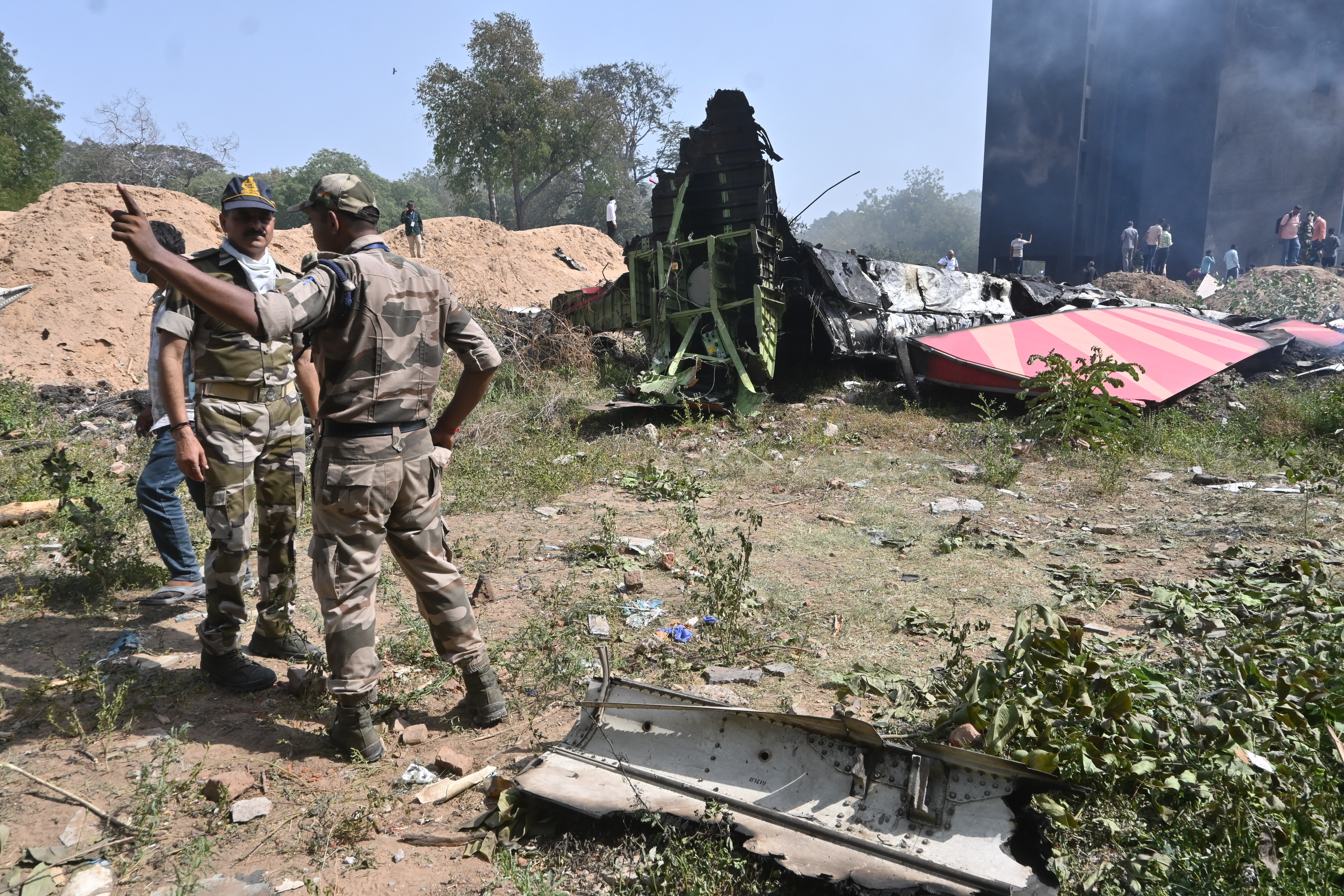
Officials gathered at the plane crash site. | Source: Getty Images
Aviation experts noted the tragic milestone the crash represents: It is the first recorded crash involving a Boeing 787 Dreamliner, a state-of-the-art, twin-engine widebody jet that first entered commercial service in 2009.
Over 1,000 units have been delivered to airlines globally. Regarding the tragedy, Boeing responded swiftly, saying it was gathering information.
According to aviation safety consultant John M. Cox, early crash images hinted that the aircraft appeared to have its nose pitched up but was not gaining altitude — a factor investigators will closely examine once the flight data recorders, which log thousands of flight parameters, are recovered.
The tragedy has stirred strong reactions not just in India and the U.K., but across the globe. In Parliament, British Cabinet Minister Lucy Powell assured that the government would offer full support to all impacted, both in the U.K. and in India.
She acknowledged the deep worry this incident has caused among families awaiting word from loved ones. Her sentiments were echoed by King Charles III, who said he and Queen Camilla were “desperately shocked” by the news, offering their prayers and deepest sympathies to all those grieving.
The enduring ties between the U.K. and India add another layer of emotional weight to the incident, especially given that nearly 1.9 million people of Indian descent reside in Britain, according to the 2021 U.K. census.

King Charles III at the King’s Foundation Awards ceremony in London, England on June 12, 2025. | Source: Getty Images
As investigations continue, the world watches closely, united in mourning and hope for clarity and comfort for those affected.
The crash comes years after a previous major passenger plane incident in India in 2020, when an Air India Express Boeing 737 skidded off a hilltop runway in southern India, resulting in the deaths of 21 people. However, the deadliest aviation accident in Indian history took place on November 12, 1996.
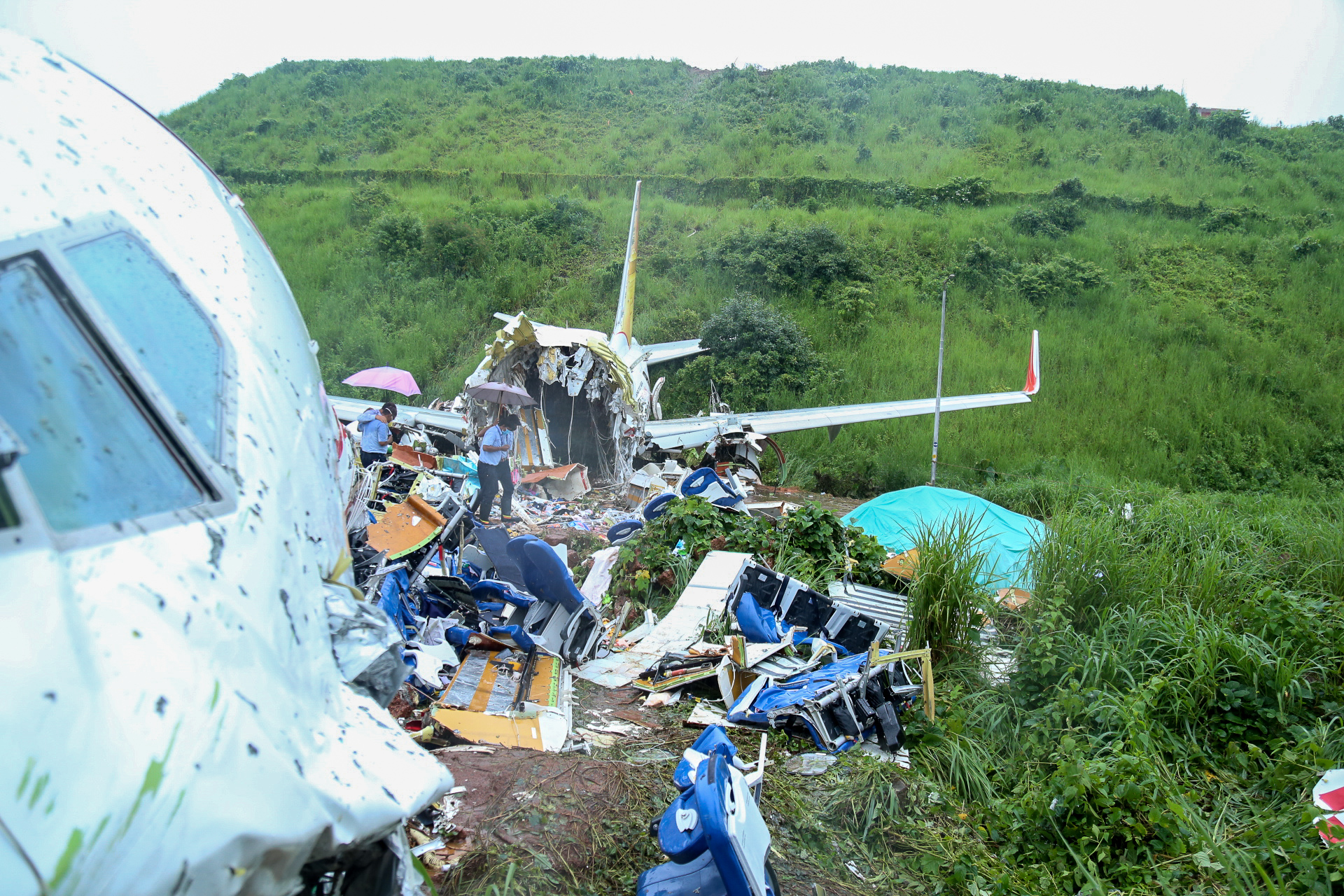
The Air India Express plane after it crashed in Kerala, India on August 8, 2020. | Source: Getty Images
On that day, a midair collision between a Saudi Arabian Airlines flight and a Kazakhstan Airlines aircraft near Charkhi Dadri in Haryana claimed the lives of all 349 people aboard both planes.
The timing of this latest crash adds a particularly somber note, as it occurred just days before the Paris Air Show, a prominent aviation expo. The event is typically a stage for leading manufacturers like Boeing and Airbus to unveil new technologies and secure major aircraft orders from airline clients around the world.
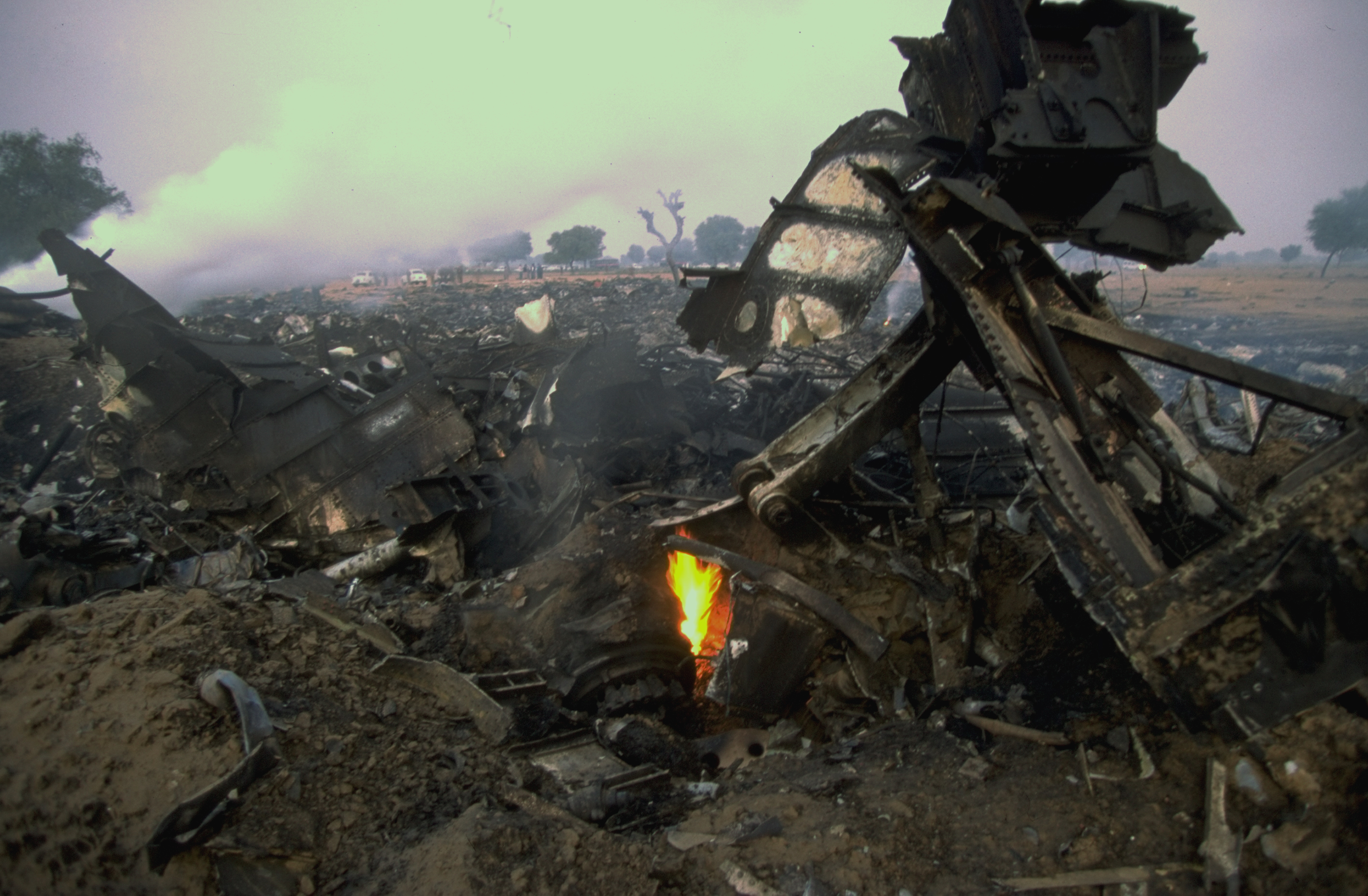
Wreckage of the Saudi Arabian Airlines flight and the Kazakhstan Airlines aircraft midair collision in 1996. | Source: Getty Images
In the wake of this tragedy, industry observers may be watching even more closely as safety standards, aircraft performance, and airline operations come under renewed scrutiny.
At this time, we wish to extend our most heartfelt condolences to all the families, civilians, and communities affected by the tragedy. We hope for their healing amid their time of grief. RIP to all the lives that were lost.
